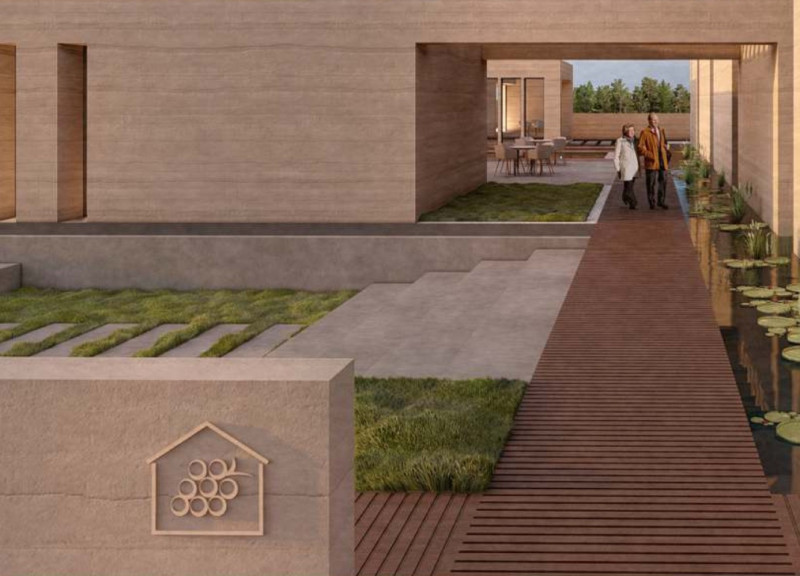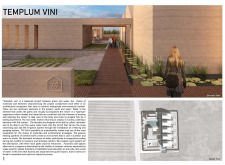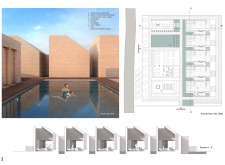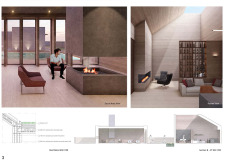5 key facts about this project
At its core, "Templum Vini" utilizes rammed earth as its main structural material, showcasing its potential in providing both thermal mass and aesthetic appeal. The resulting walls are not only functional but also visually integral to the architecture. Setting a grounding tone, the earthy texture complements the surrounding landscape and integrates the building into its context. The use of reinforced concrete ensures the stability and resilience of the project, while wooden decking accentuates connections between indoor and outdoor realms, adding a tactile quality that enhances the sensory experience of the spaces.
The architectural design incorporates extensive glass elements, which serve to invite natural light into the interiors while framing picturesque views of the water features. By doing so, the design creates a seamless transition between indoors and outdoors, allowing inhabitants to immerse themselves in their surroundings. The pool area is a pivotal aspect of the project, offering a multifunctional space for recreation, relaxation, and social interaction. Integrated seating arrangements provide comfort while fostering a sense of community.
Another critical feature of "Templum Vini" is the outdoor tasting area, which is thoughtfully positioned to optimize views and exposure to natural light. This space is designed to host wine tastings and social events, highlighting the importance of community engagement in the wine culture. The overall spatial organization facilitates fluid movement throughout the site, guiding visitors from one zone to another in a manner that feels both intentional and organic.
The unique design approaches adopted in this project extend beyond aesthetics. Emphasizing passive cooling techniques, the architecture harnesses the benefits of water features to regulate microclimates, enhancing comfort for occupants. Rainwater harvesting systems are aptly integrated to promote sustainable water management practices. This attention to sustainability and resource efficiency underscores the project’s commitment to environmentally responsible practices that characterize contemporary architectural trends.
"Templum Vini" stands as a testament to modern architectural language, where simplicity and functionality meet environmental stewardship. Each architectural decision reflects an understanding of the site’s ecological context, promoting a lifestyle that is attuned to nature. The overall design serves not only its immediate purposes but also represents a broader, collective appreciation for sustainable living.
For those interested in delving deeper into the architectural aspects of this project, including its plans, sections, and various design elements, I encourage exploration of the project presentation. Engaging with the architectural designs and ideas will further illuminate the nuances and intentions behind "Templum Vini," enriching the understanding of this remarkable architectural accomplishment.

























